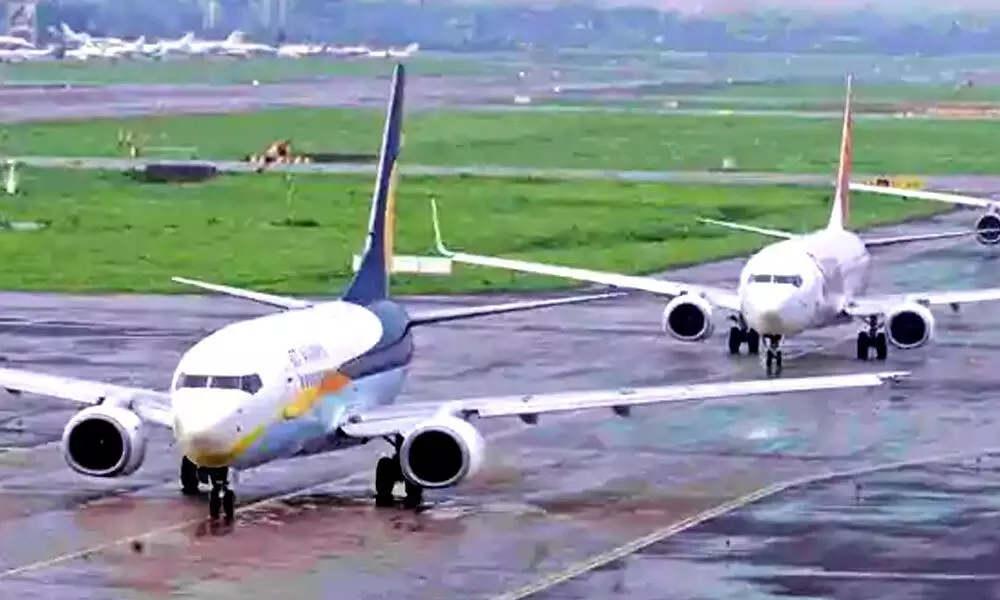Airlines revenues dip as Covid cases are on the rise
The Indian aviation industry is expected to report a net loss of Rs 21,000 crore in the current financial year (FY21) against a net loss of Rs 12,700 crore in FY20 due to lower revenues and high fixed costs.
image for illustrative purpose

The Indian aviation industry is expected to report a net loss of Rs 21,000 crore in the current financial year (FY21) against a net loss of Rs 12,700 crore in FY20 due to lower revenues and high fixed costs. The overall airline industry debt is expected to increase to about Rs 50,000 crore, excluding lease liabilities by FY22, according to ICRA.
Covid-19, the effect of years of high fuel prices, heavy taxes, low demand and cut-throat competition could crash land the Indian aviation industry. Travel bans are taking its toll on tourist arrivals and departures. While most charges the only cost which can be adjusted or tapered are salaries." This is because revenue is now stagnant and operational costs such as fuel, maintenance and airport charges for parking are fixed, salaries remain the only cost that could be adjusted. Government could perhaps help with waiver of airport parking charges or navigational services for a few months.
The International Air Transport Association estimated that India could see up to three million job losses in aviation and allied sectors such as airport services. With the second surge of Covid it is unlikely that key traffic segments like business or leisure will see green shoots and there are unlikely to be fleet expansions until the end of the financial year 2022.
The International Civil Aviation Organisation (ICAO) said that as seating capacity fell by around 50 per cent last year, that left just 1.8 billion passengers taking flights through 2020, compared with around 4.5 billion in 2019. That adds up to a staggering financial loss to the industry of around $370 billion, "with airports and air navigation services providers losing a further 115 billion and 13 billion, respectively", said ICAO in a press statement.
It has also severely impacted global tourism, given that more than 50 per cent of international travellers used to reach their destinations by plane. The regional breakdown in losses showed a $120 billion loss year-on-year in the Asia-Pacific region, $100 billion in Europe, $88 billion in North America, followed by $26 billion, $22 billion and $14 billion in Latin America and the Caribbean, the Middle East, and Africa, respectively.
Asia and the Pacific (-96 per cent), the region which continues to have the highest level of travel restrictions in place, recorded the largest decrease in international arrivals in January. Europe and Africa both saw a decline of 85 per cent in arrivals, while the Middle East recorded a drop of 84 per cent. International arrivals in the Americas have decreased by 77 per cent in January. This would represent a loss of some 260 million international arrivals when compared to pre-pandemic levels.

